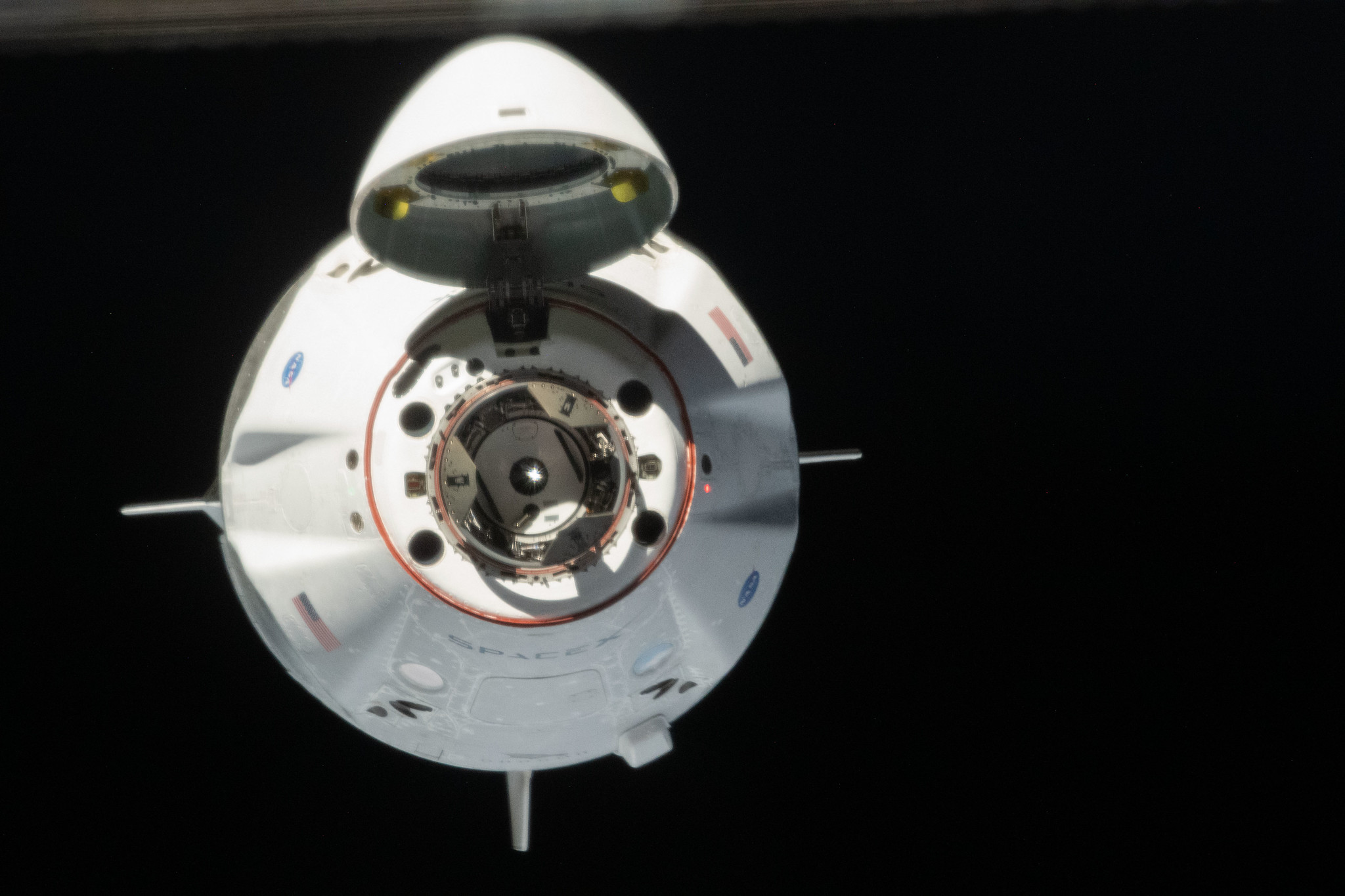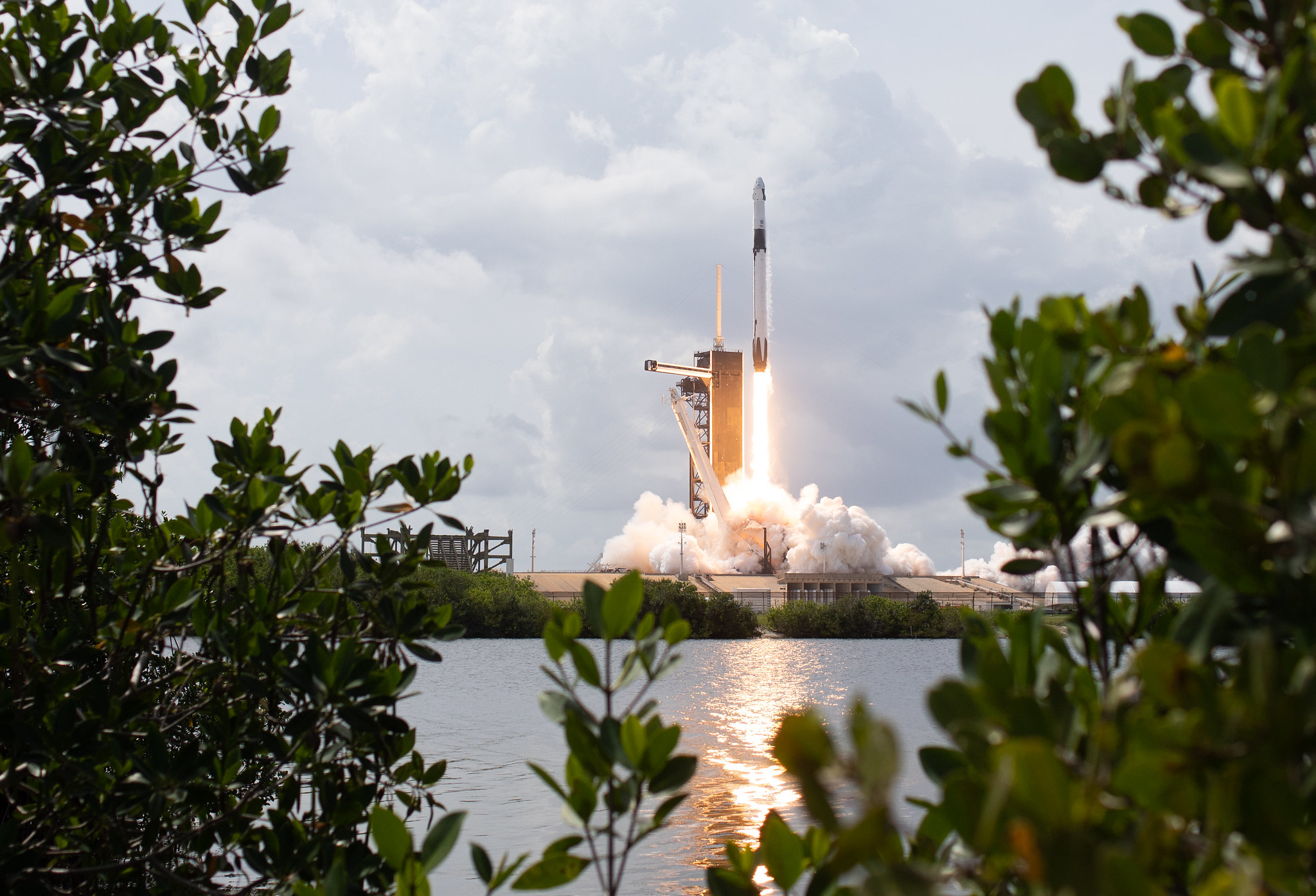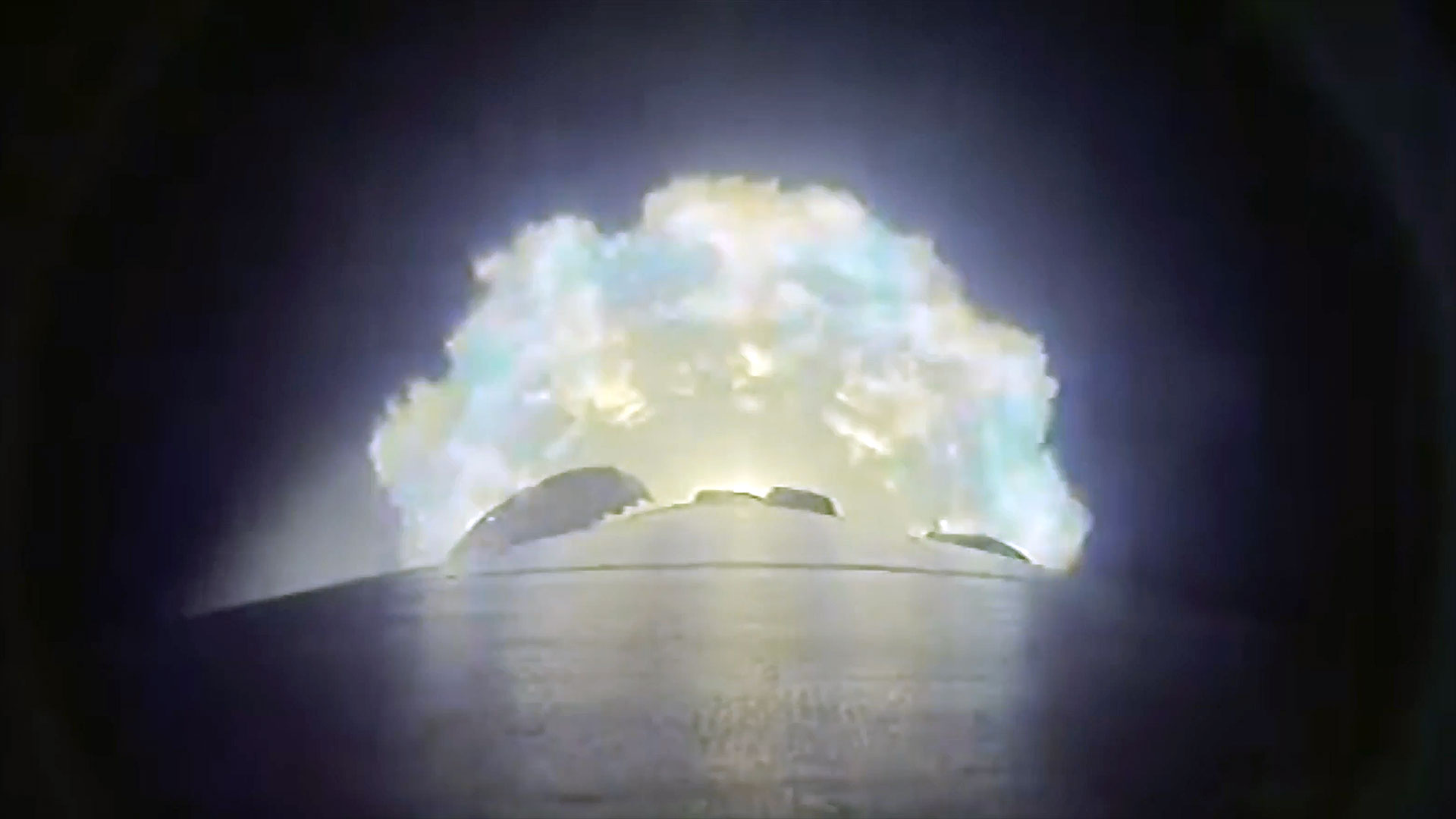SpaceX's Crew Dragon has that 'new car smell' and flies 'totally different' than a NASA shuttle
It was "huffing and puffing" on the way to orbit, astronauts say.
When the hatch of SpaceX's Crew Dragon spacecraft opened up to let two NASA astronauts inside the International Space Station on Sunday (May 31), the astronaut who greeted them at the door got a strong whiff of "new car smell."
"In fact, there was a little bit of space smell in the vestibule," or the entryway, NASA astronaut Chris Cassidy told reporters from the space station Monday (June 1). "When we got that hatch open, you could tell it was a brand new vehicle, with smiley faces on the other side, [a] smiley face on mine — just as if you had bought a new car, the same kind of reaction. Wonderful to see my friends and wonderful to see a brand new vehicle."
Cassidy, who commands the station's Expedition 63 crew, spoke alongside fellow NASA astronauts Bob Behnken and Doug Hurley at the hatch where the two SpaceX "Dragon riders" entered the station one day earlier.
Behnken and Hurley became the first astronauts to fly inside the new Crew Dragon spacecraft — and the first NASA astronauts to launch from the U.S. in nearly a decade — when they launched from NASA's Kennedy Space Center on a SpaceX Falcon 9 rocket on Saturday (May 30). Called Demo-2, this mission is the first crewed test flight of the Crew Dragon spacecraft, following the uncrewed Demo-1 mission last year.
Related: Tour SpaceX's Crew Dragon with NASA's Demo-2 astronauts (video)
While the Crew Dragon spacecraft is completely autonomous, the astronauts are able take over manual control of the spacecraft if needed — a feature that Behnken and Hurley, who are veteran space shuttle pilots, tested out while making their way to the International Space Station.
Over the course of their 19-hour flight, in between their two brief manual flight demonstrations, the astronauts caught about seven hours of shuteye, practiced getting into and out of their new SpaceX spacesuits inside the capsule, and tested out the mysterious new space toilet. NASA and SpaceX have not revealed many details about the new waste removal system, but Hurley said "it works very similar to the one we were used to in the space shuttle, and it worked very well. We had no issues with it."
Breaking space news, the latest updates on rocket launches, skywatching events and more!
Overall, the astronauts said their ride on Crew Dragon went pretty smoothly — with a few unexpected rough patches.
Bumpy ascent
"We were surprised a little bit at how smooth things were off the pad," Behnken said in a welcoming ceremony after their arrival on Sunday. "The space shuttle was a pretty rough ride heading into orbit with the solid rocket boosters. And our expectation was, as we continued with the flight into second stage, that things would basically get a lot smoother than the space shuttle did," he added, referring to the separation of the Falcon 9 rocket's first and second stages. After separation, the first stage booster returns to Earth for an upright landing, while the second stage continues to raise Crew Dragon's orbit.
"But Dragon was huffing and puffing all the way into orbit, and we were definitely driving or riding a dragon all the way up," Behnken said. "It was not quite the same ride, the smooth ride, as the space shuttle was up to MECO [main engine cutoff] — a little bit less g's but a little bit more alive is probably the best way I would describe it."
In a news conference with reporters on Monday, Hurley said the flight experience was "totally different than shuttle," and said "it was smooth" despite that rough patch during the ride. He then explained why the ride got a little bumpy after main engine cutoff and stage separation.
"The Falcon 9 is a liquid fueled rocket. Remember, shuttle had solid rocket boosters to start with. Those burned very rough for the first two and a half minutes," Hurley said. "The first stage with Falcon 9 were the nine Merlin engines ... and it was a much smoother ride, obviously, because it was a liquid engine ascent at that point."
Hurley compared the Falcon 9's stage separation to a movie scene.
"It was very similar to what you saw in the 'Apollo 13' movie, where they staged from first to second stage. So the first stage engine shut off, and then it takes a second — almost a second, might have been less than that — but it seemed like it took some time between the booster separating and then the Merlin vacuum engine starting," Hurley said. "At that point we go from roughly three g's to zero g's for, I don't know, half a second probably. And then when that Merlin vacuum engine fires, then we start accelerating again for the next five, six minutes until we achieve orbit."
Smooth docking
After Crew Dragon's bumpy ascent to orbit, the spacecraft docked with the International Space Station so smoothly that the astronauts didn't even feel it happen — something that took the astronauts by surprise.
"The thing that really stood out to both of us, and we mentioned it as soon as we docked, is we didn't feel the docking. It was just so smooth," Hurley said. "In shuttle you felt a little bit of a jolt, nothing real heavy, but you felt it."
Hurley and Behnken will spend somewhere between one and four months at the International Space Station — NASA and SpaceX have not yet determined the length of their mission — before they board the Crew Dragon spacecraft once more and begin their journey back to Earth.
The return flight could be a bit more uncomfortable (and dangerous) than the launch, with the capsule plummeting through the atmosphere at high speeds and extreme temperatures. After reentering the atmosphere, Crew Dragon's parachutes will deploy, and the Demo-2 crew will splash down in the Atlantic Ocean. A SpaceX recovery ship will be waiting for the astronauts to retrieve them with an hour of splashdown, NASA has said.
- How SpaceX's Crew Dragon Demo-2 mission will work in 13 steps
- SpaceX's historic Demo-2 test flight with astronauts in photos
- After Demo-2: SpaceX is already prepping for 1st operational Crew Dragon mission
Email Hanneke Weitering at hweitering@space.com or follow her @hannekescience. Follow us on Twitter @Spacedotcom and on Facebook.
OFFER: Save 45% on 'All About Space' 'How it Works' and 'All About History'!
For a limited time, you can take out a digital subscription to any of our best-selling science magazines for just $2.38 per month, or 45% off the standard price for the first three months.

Hanneke Weitering is a multimedia journalist in the Pacific Northwest reporting on the future of aviation at FutureFlight.aero and Aviation International News and was previously the Editor for Spaceflight and Astronomy news here at Space.com. As an editor with over 10 years of experience in science journalism she has previously written for Scholastic Classroom Magazines, MedPage Today and The Joint Institute for Computational Sciences at Oak Ridge National Laboratory. After studying physics at the University of Tennessee in her hometown of Knoxville, she earned her graduate degree in Science, Health and Environmental Reporting (SHERP) from New York University. Hanneke joined the Space.com team in 2016 as a staff writer and producer, covering topics including spaceflight and astronomy. She currently lives in Seattle, home of the Space Needle, with her cat and two snakes. In her spare time, Hanneke enjoys exploring the Rocky Mountains, basking in nature and looking for dark skies to gaze at the cosmos.




